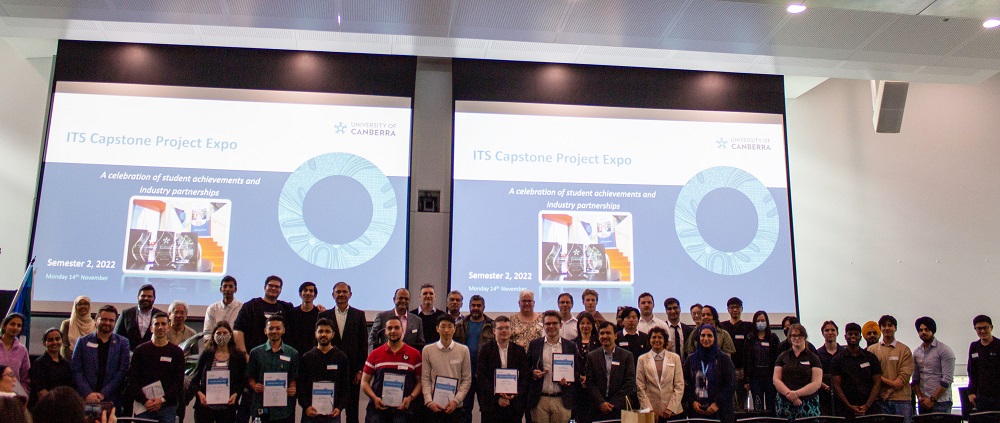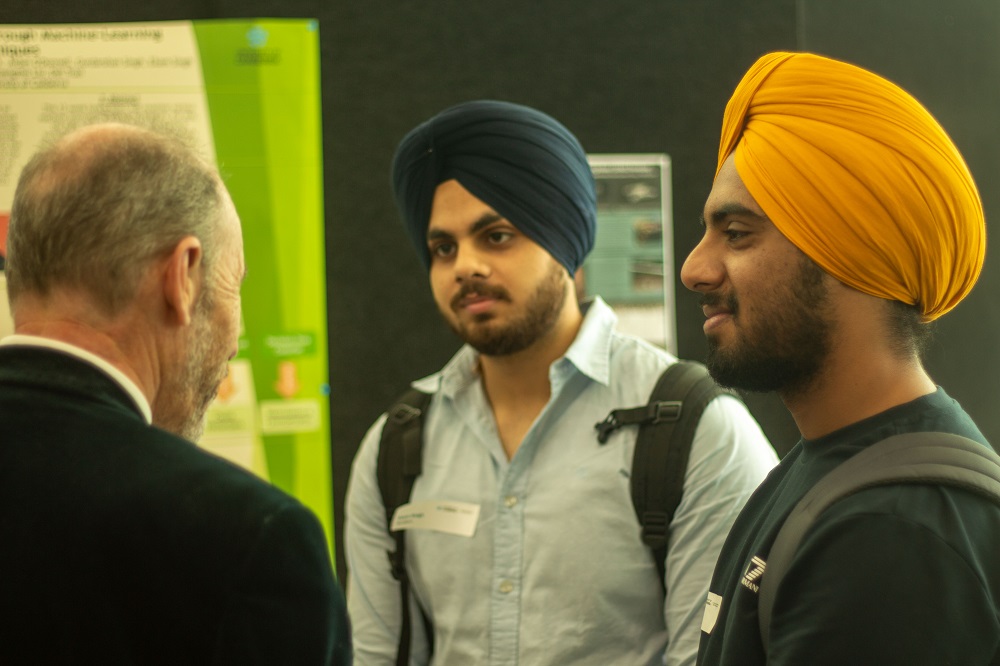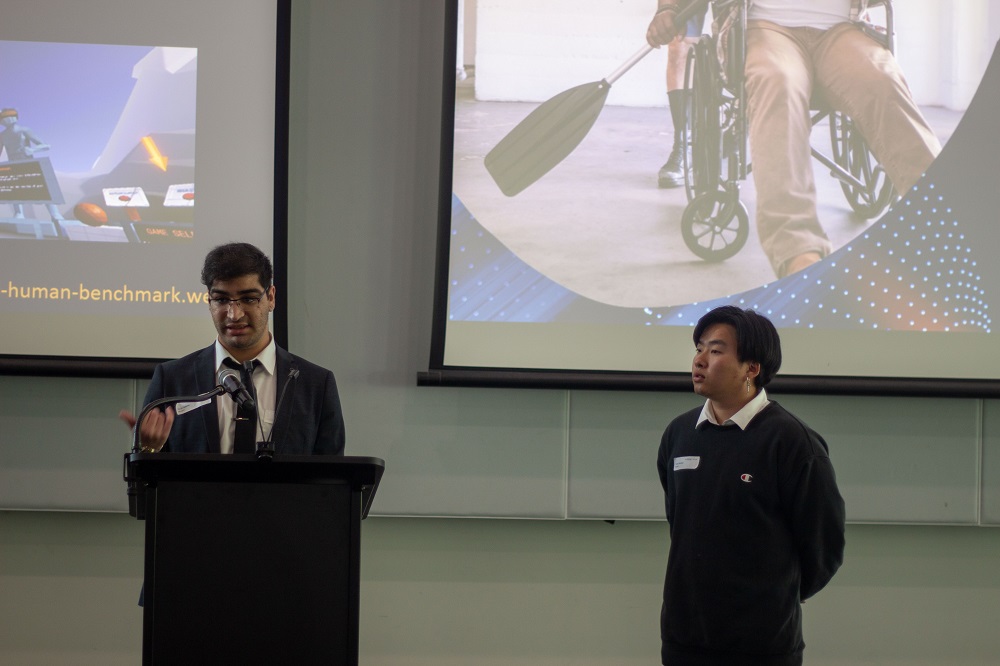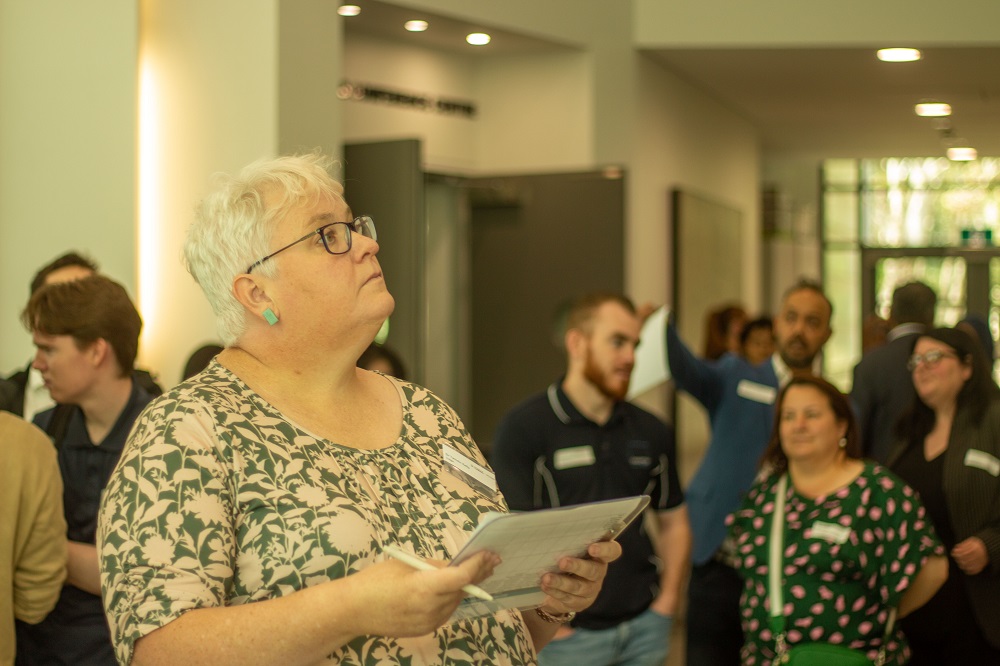Atharva Karkhanis
14 November 2022: Can digital signatures protect you from that email trying to trick you into thinking you’ve won a million dollars? Can the rise and fall of cryptocurrency be predicted using machine learning? These are just two of the real-world questions that students at the University of Canberra’s Faculty of Science and Technology sought to answer at the recently held Capstone Project Expo.
Held at the Ann Harding Conference Centre, the Capstone Project Expo celebrates semester-long projects from undergraduate and postgraduate students at the School of Information Technology and Systems (ITS), and highlights the University’s ties with industry partners.
For these projects, students worked under the supervision of industry partners or University academics.
The Faculty of Science and Technology continues its commitment to collaborating and sharing knowledge and experience with stakeholders, demonstrated by the wide range of topics tackled at the event.

To kick off the event, keynote speaker Tammy Ven Denge, whose diverse career has included working as an IT project manager at NASA, addressed some key learning pathways, including formal education, on-the-job training and surrounding yourself with people to learn from.
The top student groups from the Capstone units then presented their projects and posters to the panel of judges and an audience that included University students, academics, staff and industry partners.
The team of Raouf Younes, Dohyeon Lee, Tom Jefferies and Declan Brigs won the Best Presentation Award for their project on how machine learning or deep learning can be used to predict cryptocurrency prices in a world where a Tweet can strongly impact the highly volatile rates.

Winners of the Best Project Award, Dylan Morley and Alain Stoker, presented a four-legged walking robot that can walk, crawl and climb. Under the supervision of the University’s robotics researchers Associate Professor Dr Damith Herath and David Hinwood, the team demonstrated their success with virtual, simulated and real-life tests with the robots.
“From analysing, planning and managing a project to implementing the technical skills gained during our IT degree, the Capstone project covers it all,” said student Kartik Sharma.
“It is the ultimate milestone which provided me the opportunity to use the skills I had developed during my time at UC.”
Mr Sharma and Xuan Cuong Nguyen won the Best Poster award for their work on email virus scanning and spam detection. This project aimed at improving the understanding of antivirus softwares through tutorials.

The presentations were followed by a Q&A with the judges.
“It was fantastic to see our ITS students showcase the diverse range of innovative projects they have been working on in partnership with industry and research,” said David Rockawin, Careers Development Advisor. “Students got to test their communication skills by presenting to members of the UC community, as well as the broader Canberra community. Their passion was evident as they responded to the numerous questions put forward.”
“As judges, the outstanding presentations and projects indeed made picking winners very difficult,” said Dr Tamsin Kelly, Associate Dean of Education at the Faculty of Science and Technology.

In addition to industry partners, the Australian Computer Society’s Moe Ayoub and Jenalle Bushby were also present at the event.
“The presentations were phenomenal and showed the transdisciplinary impact of emerging technologies,” Mr Ayoub said. “The program is a great opportunity to develop professional communication skills that are often overlooked – and one of the top five in-demand skills sought after by employers. The ACS looks forward to continuing to support the event and the careers of UC students.”
The Capstone unit is run every semester by convenors Associate Professor Dr Abu Barkat Ullah, Assistant Professor Dr Ahmed Imran – who ran the undergraduate Capstone unit this year – and Assistant Professor Dr Richa Awasthy, who convened the postgraduate unit.
“UC’s ITS Capstone Expo is the celebration of the creativity and hard work of students throughout the semester in delivering projects,” said Dr Awasthy. “Through strong collaboration with industry and world-class researchers, students gain hands-on experience and prepare to be job ready for the emerging future.”
“Over the last few years, the ITS Capstone Expo has become a wonderful platform for students to exhibit their work to the UC community and beyond – the event often works as a springboard for further industry opportunities,” said Dr Imran.
The full list of Capstone Project Expo participants:
- Cryptocurrency price forecasting using machine learning – Raouf Younes, Tom Jefferies, Declan Brigs, and Dohyeon Lee
- Innovative spear phishing prevention system– Laksh Bhambhani, Ahsan Mahmood, John Meyer and Max Harwood
- Fake news detection using machine learning techniques – Sakar Shrestha, Aidan O'Donnell, Ekam Singh and Gurdarshan Singh
- Virtual human benchmark – Ryan Young, Liam Searle; Kevin Adamz and Tashi Dhendup
- Multi-gait quadruped walking robot – Dylan Moeley and Alain Stoker
- Fake news detection using machine learning techniques – Sakar Shrestha, Aidan O'Donnell, Ekam Singh and Gurdarshan Singh
The University of Canberra would like to thank:
- ACT Government
- Ability News
- Diversity Arrays
- DELV Pty Ltd
- Fair Canberra Inc.
- Hope Holistic Care
- Hyper Scalers
- Miller Health Pty Ltd
- Recovery VR
- Solution Technology
- Women in ICT


